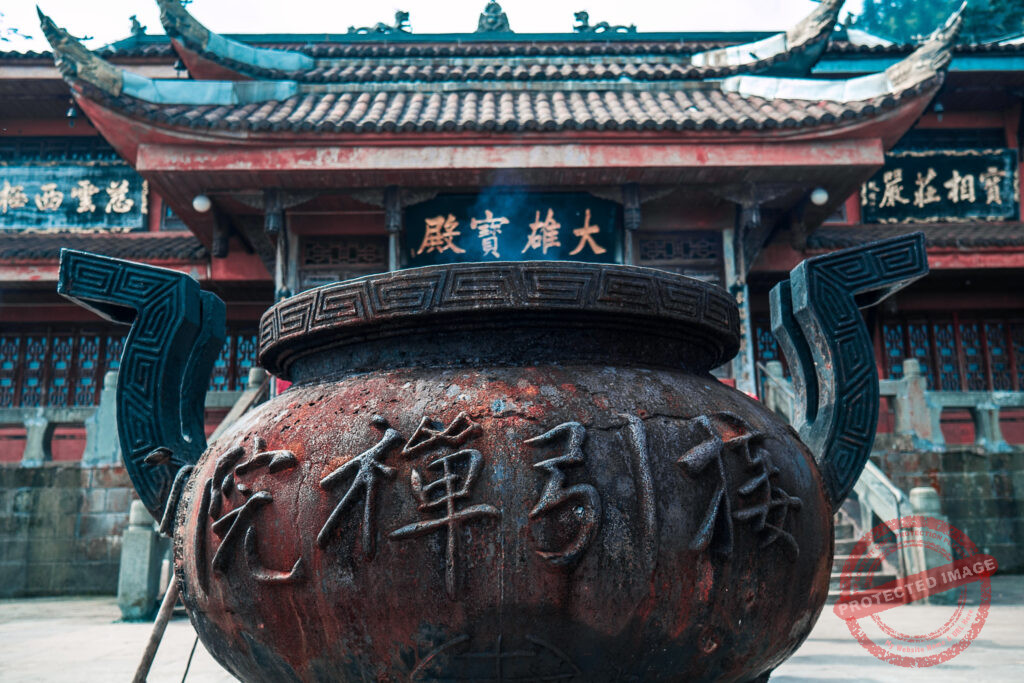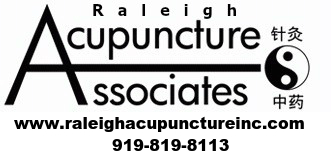
Acupuncture began 5,000 years ago in China and has since spread worldwide. Today, acupuncture is safe and performed in modern clinical settings, like our office at Raleigh Acupuncture. Practitioners are highly trained, required to attend a 4-year graduate program, and be nationally board-certified and state-licensed. Needles are sterile, single-use, and hair-thin, making treatment safe and relaxing. Today’s blog post walks you through the acupuncture fundamentals.
The Power of Acupoints
During an acupuncture session, the practitioner inserts points at specific locations on the body, called acupoints. These locations intentionally avoid arteries, veins, and organs, making needling safe for the patient. Most points are located in muscles or the open space between muscles, just below the skin’s surface. Traditional Chinese Medicine (TCM) explains that acupuncture stimulates the flow of Qi (pronounced chi), an energy that circulates through a network of channels in the body.
Acupuncture Heals at the Organ Level
Acupuncture fundamentals include understanding how acupuncture points interact with our body’s different organs and systems. Here is a list of organ systems followed by a description of how acupuncture interfaces with them.
Circulatory and Cardiovascular system
Circulates blood around the body via the heart, arteries, and veins, delivering oxygen and nutrients to organs and cells and carrying their waste products away. In addition, these two systems keep the body’s temperature in a safe range.
Acupuncture points like HT7, PC6, and LI11 help regulate heart function, blood circulation, and temperature regulation in the body.
Digestive and Excretory system
Absorbs nutrients and removes waste through the gastrointestinal tract, including the mouth, esophagus, stomach, and intestines. Eliminates waste from the body.
Acupuncture points like ST36 and ST25 strengthen the digestive function and promote healthy bowel movements.
Endocrine system
Influences the function of the body using hormones.
Acupuncture points like SP6 and KD6 help regulate hormone balance in the body, including estrogen, progesterone, cortisol, and thyroid hormones.
Integumentary system / Exocrine system
Regulates the skin, hair, nails, sweat, and other exocrine glands.
Acupuncture points like BL13, BL17, and BL40 help maintain healthy skin and regulate the release of heat through the skin. Acupuncture heals skin conditions like hives, eczema, and excess sweating (hyperhidrosis).
Immune and lymphatic system
Defends the body against pathogens that may harm the body.
Acupuncture plays an important role strengthening weak immune systems and quieting “overactive” immune responses. For this reason, many patients are seeking acupuncture to treat autoimmune diseases like Crohn’s, IBS, ulcerative colitis, lupus, and chronic fatigue.
Muscular system
Enables the body to move using muscles.
Acupuncture is best known for its treatment of musculoskeletal pain, successfully resolving pain in the back, neck, shoulders, elbows, wrists, hands, hips, knees, ankles, and feet, to name just a few.
Nervous system
Collects and processes information from the senses via nerves and the brain and tells the muscles to contract to cause physical actions.
Acupuncture is one of the best methods for resolving nerve pain and neuropathy. Acupuncture needles have a profound healing effect on damaged nerves, helping them restore normal function. It relieves conditions like peripheral neuropathy, post-herpetic neuralgia following shingles, and trigeminal neuralgia.
Renal and Urinary system
Filters the blood via the kidneys to produce urine and eliminate waste.
Acupuncture works wonders for kidney health, relieving bladder infections, urinary tract infections, and overactive bladder.
Reproductive system
Directs the process of generating offspring.
Acupuncture is one of the most effective treatments for infertility for both women and men. Treatments are safe, natural, and effective, at a fraction of the cost of Western infertility like IUI and IVF.
Respiratory system
Brings air into and out of the lungs to absorb oxygen and remove carbon dioxide.
Acupuncture strengthens the lungs, helping with asthma, shortness of breath, and chronic cough.
Disease Reflects Imbalance
Disease reflects imbalance at the organ level. For example, from a Chinese medicine perspective, asthma is an imbalance between the lungs and kidneys. At the same time, depression is a dysfunction with the liver’s ability to circulate Qi through the body. Acupuncture fundamentals include promoting healing by restoring balance to organs. Needling specific acupoints corrects imbalances, encourages healing, and reduces disease-related symptoms.
In addition, acupuncture has a potent analgesic effect on reducing pain, whether it be in a joint (knee, shoulder, ankle), muscle (piriformis, biceps, trapezius), or organ (stomach/reflux, intestines/IBS, lung/cough) pain. This analgesic effect promotes Qi and blood circulation, which speeds up healing and reduces inflammation. The healing process begins as soon as needles are inserted into the body, accompanied by the patient feeling a profound sense of relaxation and increased wellbeing.
Growing Interest in Acupuncture
Interest in acupuncture has grown significantly over the past 25 years. So when we opened our clinic in 2005, we were pleasantly surprised by how quickly our schedules filled up. Within nine months we had to move to a larger office. Since then, demand has continued to increase – we’ve even seen insurance start to cover acupuncture. We are now in-network with United Healthcare and Aetna.
Conditions Acupuncture Treats
Acupuncture fundamentals include knowing which conditions respond favorably to acupuncture treatment. For a complete list, check out our website page CONDITIONS WE TREAT.
In 1998 the World Health Organization determined that acupuncture was an effective treatment for the following conditions:
- Adverse side effects from radiation and chemotherapy
- Allergic rhinitis (allergies like hay fever, seasonal allergies)
- Emotional Conditions (Anxiety, Depression, Worry, Stress)
- Hypertension
- Knee pain
- Low back pain
- Nausea and vomiting
- Neck pain
- Post-operative pain
- Shoulder pain
- Osteo and Rheumatoid arthritis
- Sprains and other Traumatic Inflammatory responses
Acupuncture Reduces Pain
Starting in the 1950s, the Chinese government tasked research institutions with determining if acupuncture was an effective complement to Western medicine. After conducting thousands of studies, the answer was a resounding “yes”. At the same time, the government consolidated and modernized the field of TMC, bringing together the most outstanding practitioners in China, collecting their accumulated knowledge, and creating a library of modern medical texts to capture this wealth of experience. The government promoted the training of acupuncturists to offer alternatives to Western medical care where appropriate. Millions of Chinese citizens have benefited from acupuncture at a fraction of the cost of Western medicine.
Research from around the world explores acupuncture’s effectiveness for different health conditions. A patient recently brought a study to our clinic from a research hospital in Iran investigating acupuncture treatment for restless leg syndrome. We applied the treatment protocol and got great results! We frequently read studies from Europe, South America, Russia, and Africa, as well as China and Japan. The quality of studies has improved over time, and now most investigations are randomized, placebo-based, and either single or double-blind. Interestingly, acupuncture has more evidence-based research than all other alternative medicine practices combined, including chiropractic, physical therapy, massage, functional medicine, and homeopathy.
Fundamental Mechanism of Acupuncture
Research has revealed many explanations for acupuncture’s effectiveness. These acupuncture fundamentals include:
- Acupuncture increases blood circulation at the injury site, draining inflammation and accelerating healing.
The act of stimulating “organ-specific” acupuncture points triggers the release of RNA proteins that act as messengers from the acupoint at the surface of the body to deep within the body, promoting healing at the organ level. - Needling acupuncture points suppresses pain receptors in the cells and boosts the production of brain chemicals that enhance wellbeing, such as endorphins, which are neurotransmitters acting as natural opioids.
- Acupuncture regulates the levels of serotonin, prostaglandins, and the stress hormone cortisol, creating a powerful antidote to pain.
In addition, research conducted by the National Institutes of Health concluded that acupuncture promotes recovery by stimulating the following chemical mechanisms in the body:
- Schwann cell proliferation
- Nerve growth factor secretion
- Brain-derived neurotrophic factor (BDNF)
- Glial cell-derived neurotrophic factor (GDNF) expression levels
- Endogenous brain opioids
This same research found that acupuncture exerts anti-inflammatory effects by reducing inflammatory cytokines while simultaneously increasing anti-inflammatory cytokines. This balancing effect, one of the vital acupuncture fundamentals, is essential for a healthy immune system. Furthermore, investigators believe acupuncture may also reduce inflammation by activating the vagus nerve, which sends signals from the brain throughout the body.
Acupuncture Fundamentals
We hope this article on acupuncture fundamentals helps shed light on the healing power of acupuncture and TCM. Try acupuncture if you are struggling with a health condition that is not responding to Western treatment.
BOOK NOW to schedule an appointment online.
Meet the Practitioners (Video).
Learn about the conditions we treat.
Focus keyphrase: acupuncture fundamentals
Photo by David Besh: https://www.pexels.com/photo/photography-of-the-temple-879359/




